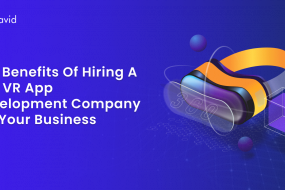As the buzz around the metaverse grows, the need for sophisticated avatars enabling meaningful engagement across digital worlds is gaining recognition. While still nascent, how we develop and interact via avatars will greatly impact the evolution of the immersive tech stack. This article explores top trends emerging in metaverse avatar development design and applications.
Definition of the metaverse
The metaverse broadly refers to shared virtual worlds blending physical, augmented, and virtual realities in a seamless experience. It encourages interactions through digital representations of ourselves known as avatars. The metaverse can be defined as an expansive network of persistent, shared, 3D virtual spaces linked into a perceived virtual universe. It is presented as an embodied internet where shared virtual spaces are seamlessly accessed across platforms like augmented reality and virtual reality. In the metaverse, people can interact, work, play, and socialize as digital beings represented through customized three-dimensional avatars. As an evolution of the internet, the metaverse aims to enable deeper engagement between users by simulating physical presence and environments.
Importance of avatars in the metaverse
Avatars act as human bridges between the digital and physical realms. Their detailed development following trends will influence how people socialize, work, and play in future metaverses. Authentic yet personalized avatars will see widespread adoption. Avatars will play a fundamental role in how people experience and interact with each other in the metaverse. They act as digital personas that users can customize to reflect their identities, fashion styles, physical attributes, and more. Through avatars, users can navigate virtual worlds, engage in shared experiences, work collaboratively in shared spaces, and build community. Avatar design and personalization are important as they empower users to be anyone they want in virtual worlds. An engaging avatar can enhance how people socialize, work, and spend time in metaverse environments.
Top 10 trends in metaverse avatar development
As the metaverse continues to expand, major tech companies and startups are heavily investing in innovations that can improve how users are visually represented through avatars. Some notable trends include photorealistic avatars, full body tracking through AR and VR sensors, customizable outfits and accessories, AI-powered facial expressions and emotions, universal avatar standards, diverse body types and ability options, 3D selfies to create avatars and networked avatar marketplaces. These advancements aim to create avatars that empower rich self-expression and deliver truly immersive representation in virtual worlds.
1. AR & VR Gaming
Early metaverse apps are games utilizing gaming industry expertise in 3D modeling, animation, and interactivity. Advanced avatar technologies enable immersive character-driven gameplay and co-playing across devices. As augmented and virtual reality technologies progress, immersive gaming experiences are poised to become a significant mainstream use case for the metaverse. Early experimental titles have given a glimpse of what’s possible, from multiplayer AR versions of popular franchises to synchronous social VR games. Forward-thinking developers design mechanics that leverage superimposed digital layers and a sense of embodied presence.
We can expect everything from expansive virtual worlds and fantasy RPGs to location-based scavenger hunts and educational games that blend the digital and physical. Multi-device compatibility will allow seamless transitions between AR, VR, and conventional platforms. Sophisticated haptic interfaces may provide tactile sensations that heighten the realism of interactions and environments. With high-end consumer headsets still on the horizon, streaming and browser-based options will lower barriers to entry. As immersive technology becomes increasingly affordable and accessible, the metaverse stands to transform how we play both individually and collectively radically.
2. Metaverse Events
Avatars provide novel ways to engage in both virtual and hybrid events, from concerts to conferences. Cross-platform compatibility allows participation using any device from multiple locations. As the ability to gather in shared virtual spaces develops, the metaverse has potential use for conventions, conferences, performances, and more. Rather than passive viewing, participants could have a fully embodied social presence. Speakers may leverage mixed realities to enhance presentations with interactive overlays and walkable demonstrations.
Virtual venues could scale attendance far beyond physical limits to reach global audiences simultaneously. New event formats may unlock, such as participatory works, synchronized dance parties, or interactive comedy shows. Networked spaces may allow hybrid physical-virtual gatherings with shared experiences between co-located and remote attendees. Collaborative elements could engage participants beyond one-way consumption. Monetization strategies incorporating virtual ticket sales, sponsorships, and merchandise may become viable new revenue streams. Done skillfully, metaverse events could foster meaningful community and memorable shared experiences.
3. Visual Art Gallery
Galleries and artists are experimenting with programmable exhibitions and artwork featuring animated avatars. Virtual tours and interactions boost engagement beyond physical limitations. Dedicated virtual galleries and museums promise new ways to experience visual art within the metaverse. Beyond passive viewing, immersive environments may bring paintings, sculptures, and installations to animated 3D life. Multi-user spaces allow the sharing of awe and perspective in real time.
Unique locations like undersea environments or alien planets could provide inspiring new conceptual frameworks. Augmented overlays may integrate interactive elements, historical context, artist profiles, and more. Possibilities include virtual collaborative art-making, live performances combined with static works, curated theme rooms, and traveling exhibits that adapt to visitors. Monetization of digital likenesses of physical works could support artists. Interactive shopfronts may sell virtual replicas and NFT versions of selections. As with events, hybrid physical-virtual galleries mixing shared remote viewing with on-site exhibits could attract global audiences. The metaverse may reimagine how visual culture is created, exhibited, and experienced.
4. Metaverse Avatars
Specialized avatar creators emerge with robust feature sets for personalized identity expression, abilities complementing tech stacks across metaverses or virtual worlds. Avatars are projected to be one of the defining aspects of interacting within the metaverse. They will be users’ digital representation and embodiment, facilitating social interactions, gameplay, and virtual co-experiences.
Early metaverse worlds featured basic avatars with limited customization options. However, advancements now allow for high individual expression levels through realistic visuals, customizable outfits, programmable movements, and more. Emerging trends point to innovations like AI-powered facial recognition and dynamic capabilities. The future of avatars looks promising for high personalization, blurring the line between physical and virtual identity. As graphics fidelity improves through facial scanning technologies, avatars may eventually become indistinguishable from real people. Their development will maximize immersion and connection within shared virtual spaces.
5. Web3 & Decentralisation
Decentralized management of self-sovereign avatar identities and attributes using blockchain gains steam. New monetization and ownership models develop around decentralized virtual goods. The original concepts behind the internet focused on creating an open, decentralized network. While it has brought information to the masses, current platforms are often centralized with single points of failure. However, blockchain and associated technologies provide an opportunity to develop an internet where users collectively own the infrastructure and data through distributed consensus mechanisms rather than corporations. Dubbed “Web3,” this new paradigm aligns closely with metaverse definitions as an interactive, persistent virtual space. Decentralized virtual worlds could allow for democratized participation, authentication without intermediaries, and monetization of user-generated value without centralized rent-seeking. Standards and frameworks are emerging for decentralized identities, digital asset ownership, and interoperability across virtual ecosystems.
6. Metaverse Marketing
Brands deploy virtual avatars, storefronts, and spaces for immersive experiences and promotional activations. Geo-located avatar networks introduce localized experiences. Advertisers and marketers recognize the metaverse as a new digital channel as more time and transactions are projected to transition into virtual spaces. Novel opportunities exist beyond traditional banners, from immersive branded worldmaking and virtual product launches to live events and sponsored avatar apparel.
Dynamic, interactive campaigns may adjust messages based on contextual signals and user behavior over time. Success will rely on aligning with positive community values rather than intrusive commercialism. Campaign measurement tools may track engagement through metaverse KPIs rather than physical world equivalents. To build goodwill, brands can also facilitate the discovery of creators, host skill-building programs, and invest in bettering metaverse infrastructure for all. If approached authentically, marketing in virtual spaces fosters connections rather than just sales.
7. Digital Workplaces
Enterprises explore virtual offices utilizing realistic human avatars for remote collaboration and hybrid work arrangements of the future. As hybrid and remote work become more common, the metaverse is primed to transform workplace collaboration and operations radically. Virtual offices can scale beyond physical constraints to support global, around-the-clock work. Through their avatars, colleagues may seamlessly transition between synchronous meetings, casual run-ins, and interactive project ‘war rooms.’ Emerging technologies like haptic interfaces and virtual/augmented displays will blur the lines between digital and on-site employees.
Rather than passive conferences, virtual space may facilitate lively brainstorms, impromptu ideation sessions, skill shares, and social mixers to facilitate company culture. Complex issues such as off-site network maintenance or product assembly can be addressed through interactive 3D simulations. By extending collaboration utilities into virtual domains, the metaverse offers opportunities to make remote work feel as engaging and team-oriented as traditional offices.
8. 3D Digital Twins
Personalized 3D avatar replicas of individuals embed biometrics and IOT feedback improving telepresence applications across industries from healthcare to education. A digital twin is a virtual representation of a real-world entity or system that spans its lifecycle, is updated from real-time data, and is used for various analysis and operational purposes. In the context of the metaverse, 3D digital twins will be crucial for replicating physical spaces, infrastructure systems, and objects at high fidelity. Detailed virtual replicas of cities, buildings, factories, and more will unlock innovative applications from urban planning and facility management to training, education, and remote collaboration. As twinning technologies advance through high-resolution 3D scanning and sensor integrations, the metaverse has the potential to converge the digital and physical. Users may one day navigate immersive virtual replicas of places they have never visited in reality. Digital twins are projected to be foundational for blending boundaries between virtual and augmented worlds.
9. IoT Integration
The connection of actual physiological and environmental sensors to virtual avatars allows for immersive context-aware virtual interactions based on real-time inputs. The connectivity of physical devices and integration of ubiquitous sensors is opening new doors for the metaverse. As more “things” come online through technologies like RFID, low-power wireless, and edge computing, vast streams of real-time operational data will flow.
The metaverse provides an interface to converge this Internet of Things at scale. Via their virtual counterparts, data from IoT deployments spanning industrial control systems, medical monitors, consumer appliances, environmental sensors, and beyond can be seamlessly visualized, analyzed, and acted upon. Opportunities exist for spatially overlaying dynamic sensor readings atop location-based virtual twins. Remote monitoring and control of physical systems may also unlock through metaverse front-ends. Over time, the divide between virtual and physical worlds will narrow.
10. Data Science
Advanced AI expands personalized avatar generation and animation capabilities using machine learning techniques leveraging vast metadata sets across virtual worlds. A data science lens will be crucial as virtual worlds develop sophisticated avatars, economies, social networks, and complex systems. Analyzing behaviors and interactions of vast numbers of autonomous agents within computational simulations promises new insights beyond what is possible in physical reality alone.
Advancing fields like machine learning, network theory, complex systems modeling, and agent-based modeling will be necessary to understand better how people and social systems function and inform improvements. The metaverse provides a living laboratory to test hypotheses at scale safely. Data and analytics may also optimize areas like virtual traffic flows, matching algorithms, predictive maintenance of digital infrastructure, simulation of epidemics, and more. As a complement to physical analysis, data science in the metaverse can accelerate progress on many scientific and social challenges.
Final Take Away
By embracing these emerging trends, the metaverse’s potential as a convergence of all digital experiences takes shape. As avatars gain more human resemblance, new frontiers emerge across entertainment, social, work, and commerce platforms. With collective innovation, the metaverse revolution fueled by advanced avatars promises rich experiential value for all.











